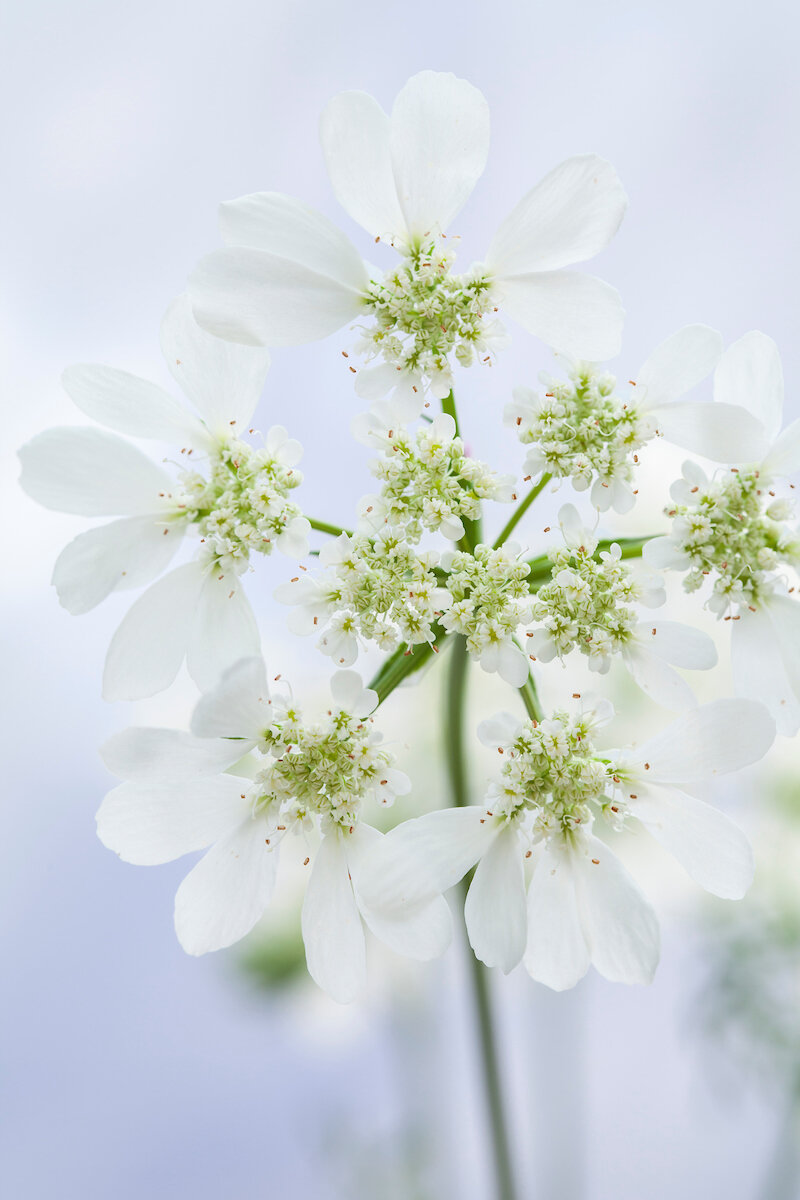Orlaya
Photograph by Sabina Rüber
Orlaya grandiflora is the darling of the British cut flower growers, and perfect for bringing a natural look both to borders and bouquets. Growing wild in the olive groves of the Mediterranean, it is surprisingly hardy and like other hardy annuals can be sown in autumn which gives you sturdier, earlier-flowering plants the following year. Similar in nature to Ammi majus, it has more substantial, complex flowers, with larger outer petals on each floret, creating more impact from a distance. The snow-white flowers dance around on wiry stems above ferny foliage, mixing easily with other annuals or dotted around in a herbaceous border. It looks especially good with blue or mauve – salvias, echinops or Geranium ‘Johnson’s Blue’ – or mixed in with cosmos or cornflowers. Flowering from early summer, it can go on and on as long as you keep deadheading or picking it for the vase.
Like other tap-rooted annuals, Orlaya needs handling with care, and some people would advise only planting direct. However, it is one of those ‘choice’ annuals where you never get many seeds in a packet – so to eliminate the haphazardry of sowing direct, and to have more control over germination and seedlings, I think it’s best to sow under cover. If you sow the seeds in modules you can plant them straight from the cell in mid-spring to minimize root disturbance. For bigger, earlier-flowering plants, sow into modules in late summer and keep in a cold frame or greenhouse over winter. Otherwise sow in modules in early spring and plant out in mid to late spring. Give the plants a spot in full sun. They will grow in most soils, but ideal conditions are a reasonably fertile, well-drained soil.
Back to The Flower Garden main page. To buy a copy of The Flower Garden book click here.
